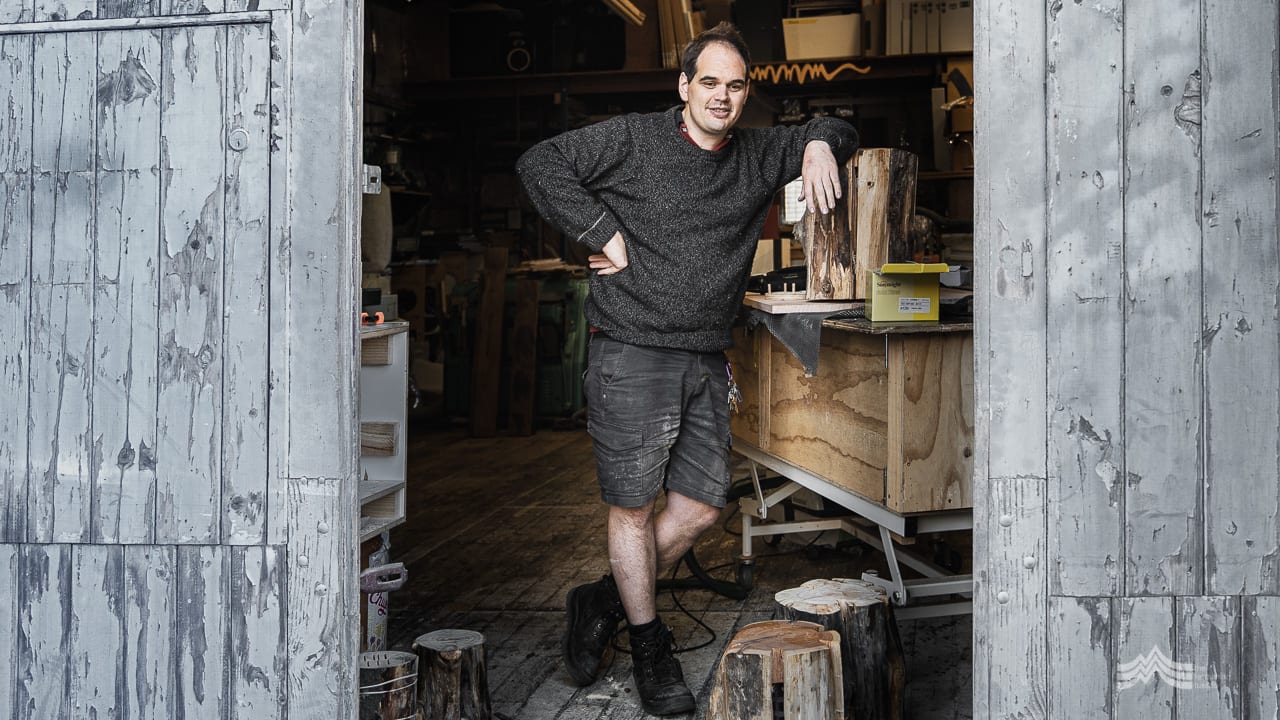Duncan Meerding’s upbringing can perhaps be thought of as typical of the average Hobartian. He grew up in the shadow of kunanyi/Mount Wellington, chased a vibrant interest in outdoor pursuits, and enjoyed his time at a local public school developing a sense of self and social justice.
At age 19, whilst just beginning to define his career aspirations, Duncan’s world was turned upside down. “It was mid-April when I noticed my sight was degenerating,” explains Duncan. “By December that same year I was legally blind.”
Duncan was struck by a rare genetic mitochondrial condition. “My uncle actually has the same thing, but as no one else in the family had been affected, none of us had thought too much about it,” he recalls. “To be honest, I’d almost forgotten about it… however within just a few months I had only about 5% of my sight remaining and it’s been that way for the past 15 or so years.”
 At the time of his sight deteriorating, Duncan was busy pursuing a career in nursing. “I loved the practical nature of the work and also the caregiving role,” he remembers fondly. “I enjoy helping others so it seemed like nursing could indeed be a good fit for me. Once it became clear what was happening with my sight, I had to refocus my goals. Although I set about working towards my degree, it quickly became apparent there would be significant challenges associated with becoming a registered nurse. After taking stock I decided to take a different tack with my future.”
At the time of his sight deteriorating, Duncan was busy pursuing a career in nursing. “I loved the practical nature of the work and also the caregiving role,” he remembers fondly. “I enjoy helping others so it seemed like nursing could indeed be a good fit for me. Once it became clear what was happening with my sight, I had to refocus my goals. Although I set about working towards my degree, it quickly became apparent there would be significant challenges associated with becoming a registered nurse. After taking stock I decided to take a different tack with my future.”
Harking back to a long held love of furniture design that he had first developed in high school, Duncan began to explore a path forward. “It was always something I had enjoyed,” he grins. “I remember once during a week of swot vac I made an entire table. But it wasn’t all about avoiding studying. I found it cleared my head and really provided me with some much-needed balance.”
“I love that process of working through a problem to arrive at a solution. There is so much scope within that.”
Duncan returned to university to study a Bachelor of Arts. “There was I lot I had to relearn,” he describes. “For example, I basically had to relearn how to read, essentially by listening to most of my text. I consider myself lucky though as I had some great mentors in the vision impaired community who helped me to develop the tools I needed in order to adapt.”
“I’m grateful I’ve had the right people come into my life at the right time,” Duncan continues. “I discovered I could take a woodworking course through UTAS and, to the their credit, some of the staff really went out of their way to accommodate me. If there is one thing I’ve learnt throughout this whole journey, it’s that having an open mind is the single biggest thing. It’s often said that disability itself is not a problem, it’s the barriers that are put in front of people that are – and I have often found that to be very true.”
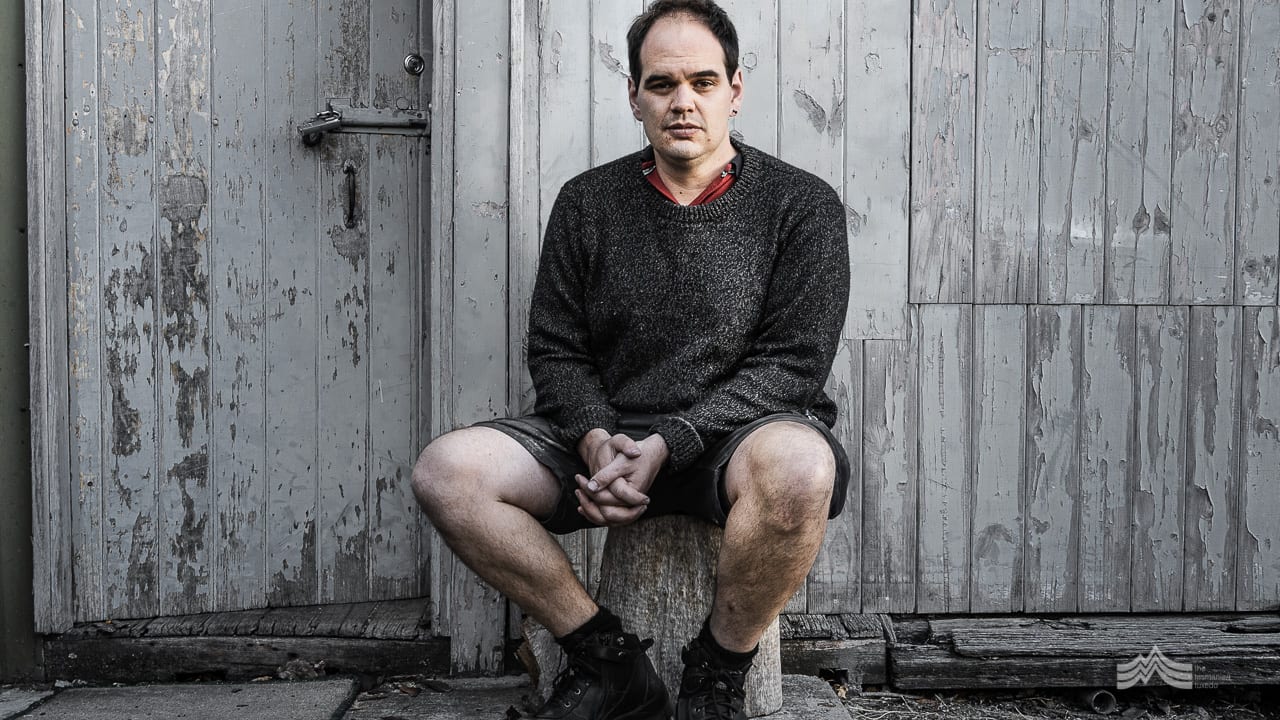
It’s fascinating to spend some time with Duncan in his workshop. Tucked away down an unassuming gravel drive, surrounded by semi-industrial neighbours, sits a characterful outbuilding in urban North Hobart. A disused boat building shed, it’s a busy space crammed with impressive machinery, all manner of tools, and piles of timber awaiting transformation. One would be hard-pressed to identify Duncan’s vision impairment if he did not volunteer the information, such is the ease with which he moves around his workshop. Amongst imposing power saws, lathes and high risk power tools operates a careful and confident craftsman.
“Basically it comes down to learning new ways to approach machinery,” Duncan describes. “There are a range of skills I utilise to ensure I do things safely. It boils down to what is essentially best practice in the industry anyway, plus a whole lot of caution. As the saying goes, there are many ways to skin a cat, and I’ve had to find the ways that work for me.”

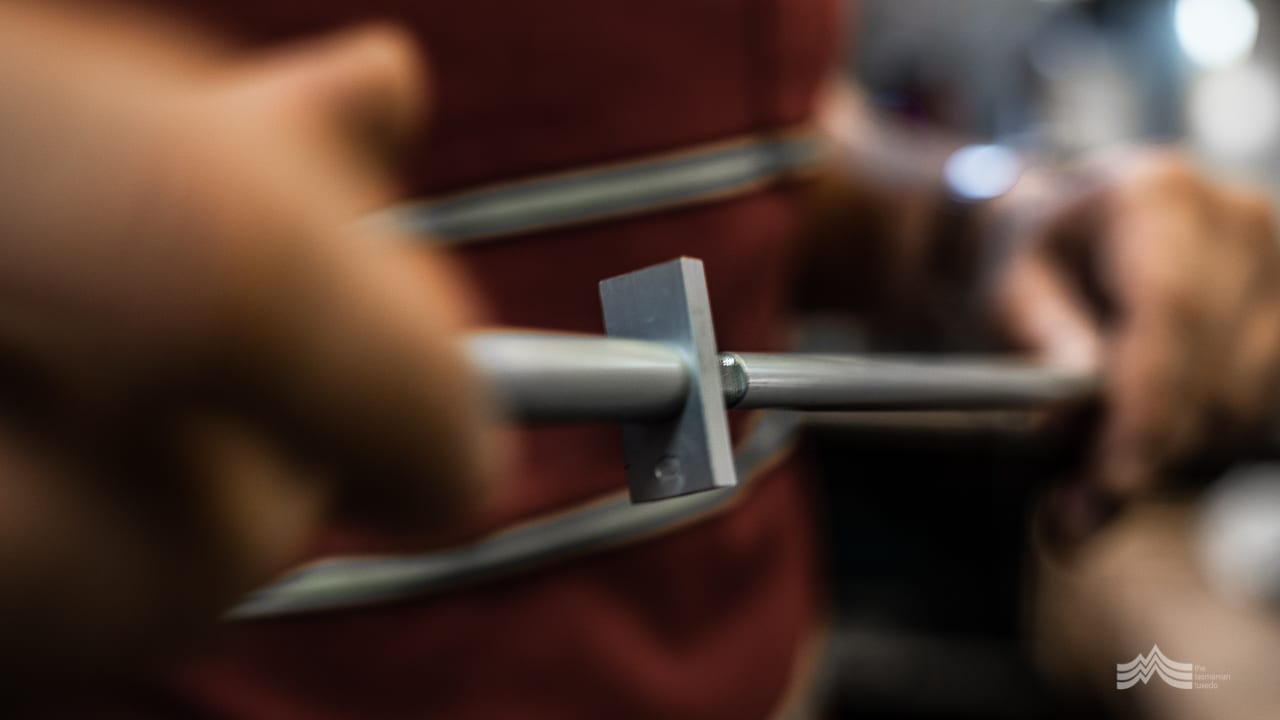
A scholarship through Designed Objects Tasmania provided Duncan with a year of studio space plus access to mentors and workshops to really kickstart his design career. “That really launched me as a design professional,” he nods. “Again, open mindedness was at the core of progress for me and I was lucky enough to spend time with some amazing people who helped inspire me. The skills of design and adaptation are very interrelated. Essentially there is a set of problems to solve… and those problem solving skills are very transferable to the making process.”
Duncan cites time spent with renowned designer David Trubridge in New Zealand as a highlight. “It was great to experience a design and production facility in a similar environment to here. Obviously New Zealand and Tasmania share a lot in common and it really got me thinking about the scope and potential of what I could do here,” he describes. “I have remained in touch with David and his team and they have continued to be very generous with their support.”
“The design community here is a great one to be a part one,” nods Duncan. “I generally find people very collaborative and open to problem solving together. In fact, I really prefer the term collaboration rather than mentoring. Mentoring implies one party is more advanced than the other, but I find value in all sorts of collaborations. There is always something to learn no matter who you are working with and at what stage they’re at.”
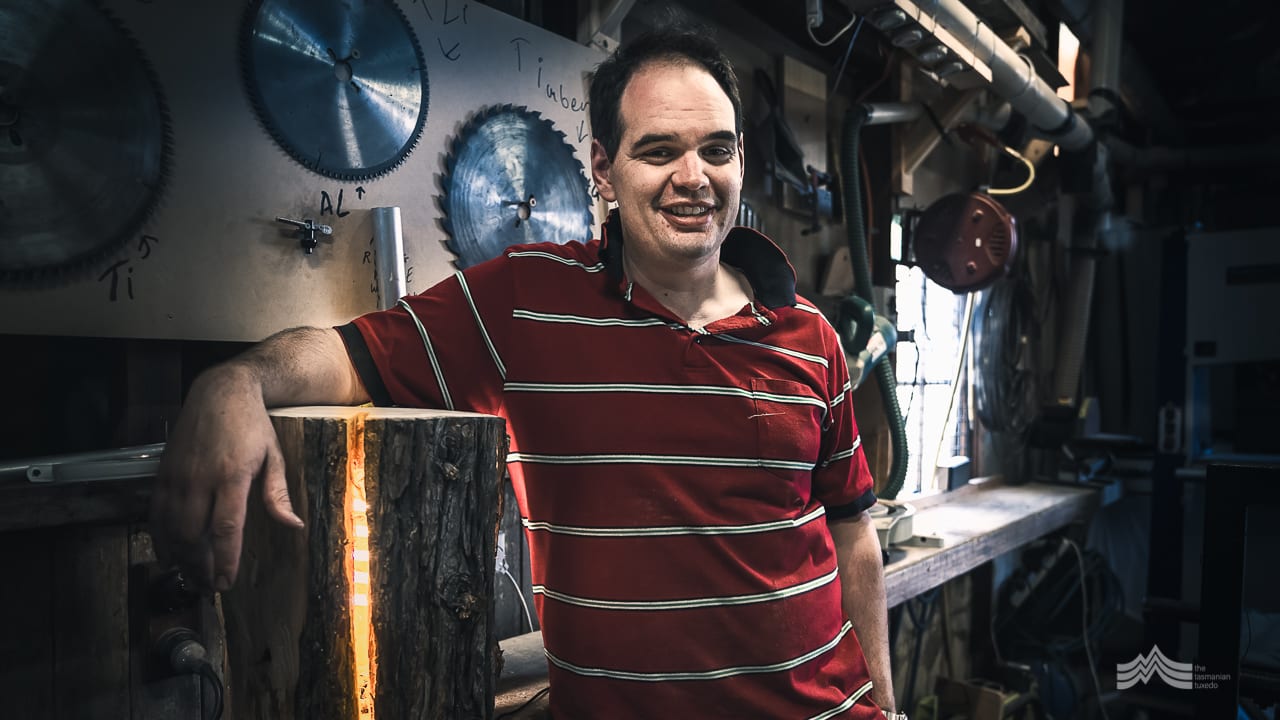
Majoring in furniture design and modern history, the diversity in Duncan’s formal studies reflect his genuine interest across a range of issues. “For a time there I also considered going into social work, particularly in the refugee, migrant and disability sectors,” he recalls. “I’ve always had a strong interest in social justice and also in environmental issues. Growing up here in Tasmania, I don’t think that’s uncommon. There’s something about Tasmanians and their attitudes… they are generally unassuming, down to earth and active in their support of all sorts of issues.”
Duncan is perhaps best known for two signature pieces of lighting. The first is his striking cracked log lamps. Bringing to life pieces of macrocarpa that would otherwise be discarded, Duncan explains how the timber is perfect for these illuminated gems. “Like all my designs, I try to utilise the natural properties of the timber…it’s about finding the right materials for the job. Macrocarpa is really rot resistant and these salvaged stumps would otherwise not be used for anything else. Due to their vast imperfections they would have just been burnt, so this is a win-win.”
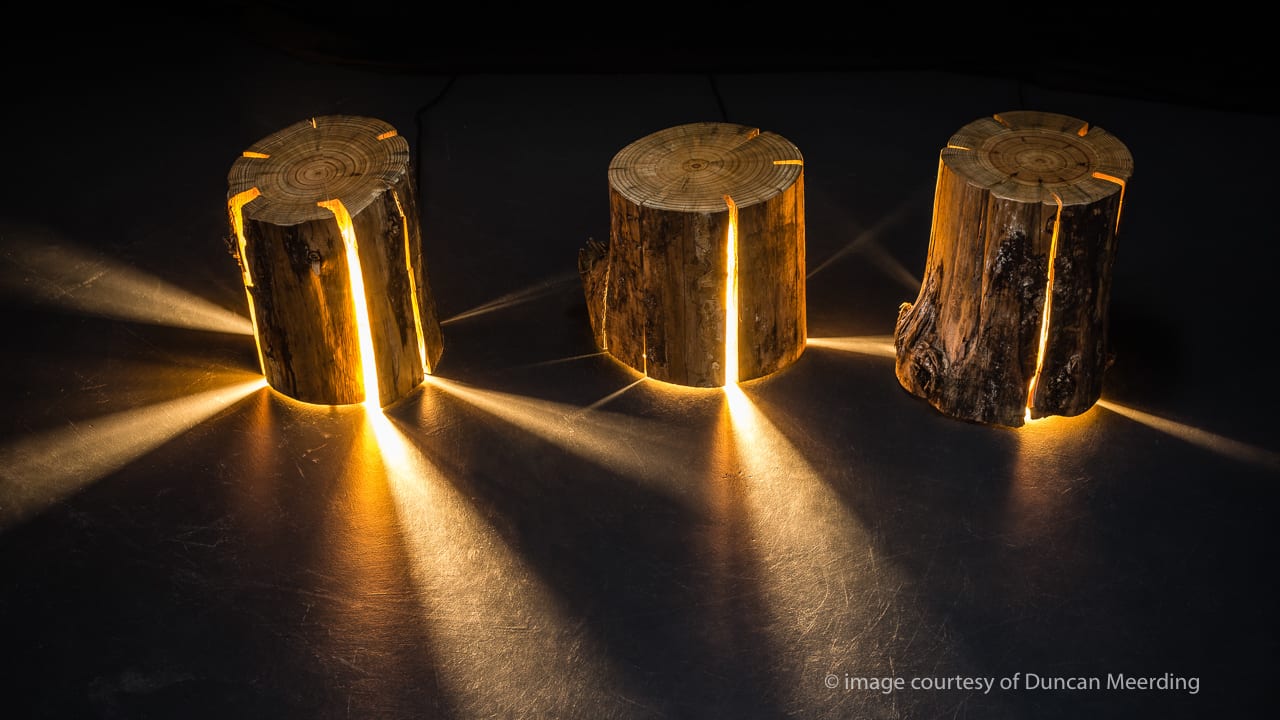
Throwing light from a central core, each cracked log lamp embraces, rather than avoids, the naturally occurring cracks in the log. “By turning them into a vessel for light, we can bring the outside in, and be reminded of our intrinsic connection with nature,” says Duncan. “The warm yellow glow from within pushes light through the one thing often associated with darkness.”
“International attention has certainly helped with the profile of the cracked log lamp,” smiles Duncan modestly. “In 2018 it won the Best Floor Light at the DARC Awards in London, amongst entries from lighting designers from across the globe. “It was the end of a long day exhibiting and I was having a quiet beer when I caught wind that something was going on,” Duncan recalls. “I was ushered down to the awards ceremony and it was certainly a highlight of my career to date when I took out the category. To know that over 6000 of my very well respected peers voted for me was very humbling to say the least.”
“I’ve exhibited quite a few times overseas,” says Duncan. “Milan, Venice, North America… and have been successful in gaining some great commissions, including some lighting for Google’s offices. The exposure the international stage can offer has been invaluable in building my career, but I’m just as grateful when my work is appreciated here at home and particularly love designing custom lighting solutions for private clients. Despite the recent explosion of growth around Tasmania, my audience is very niche and boutique. I really love my contact with the local market here at home.”
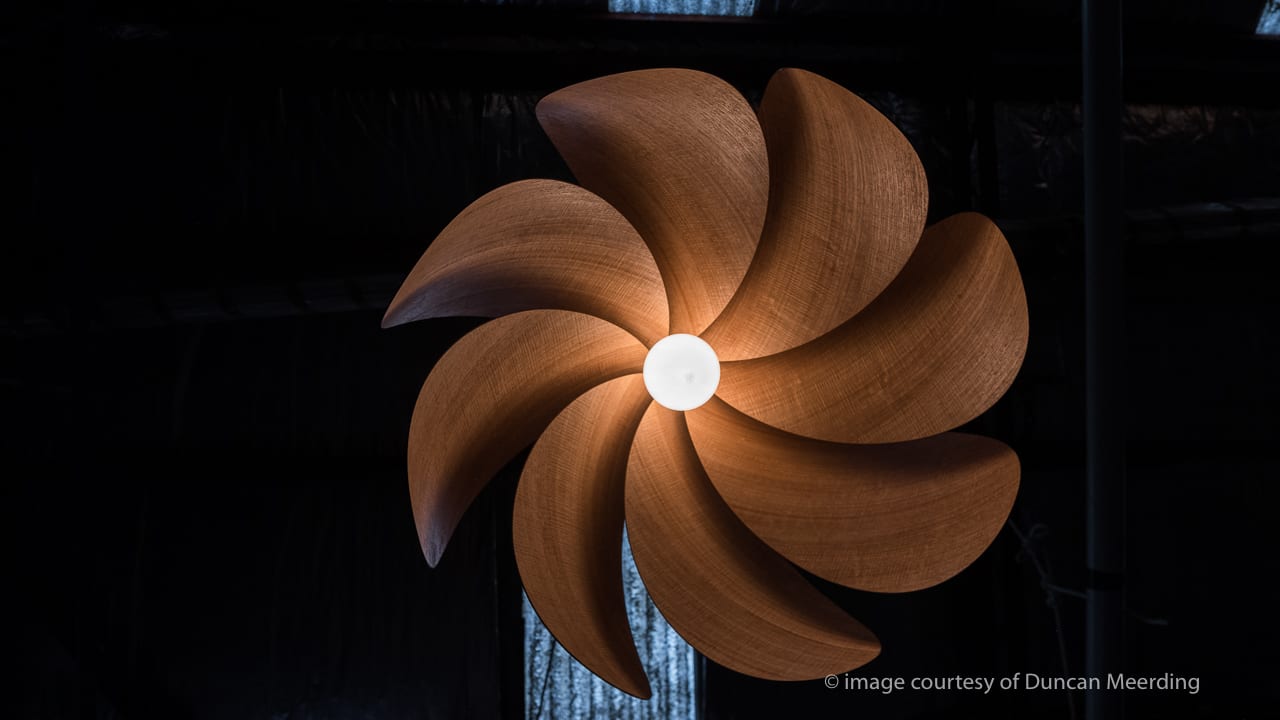
In more recent times, the majestic propeller light has become a signature of Duncan’s celebrated lighting solutions. These elegant ceiling hung lights cast dramatic shadows through a complex eight-bladed form. “This was four years in the prototype stage and brings together both organic and industrial shapes,” he explains. “People often see an end product but don’t always understand what it’s taken to bring it to life. The process is often very complex.”
A passion for the Tasmanian environment is clearly evident in Duncan’s striking works. “Nature definitely inspires my designs,” admits Duncan readily. “I love salvaging something that nature has created. The elements are often responsible for beautiful scars and flaws in the timber and I love turning those into design features.”
Locals seeking a taste of Duncan’s works are well rewarded across his home city of Hobart. MACQ01 Hotel, the Henry Jones Art Hotel and the DEN Bar Salamanca all feature stunning creations that add to their naturally warm ambience. Eucalyptus and blackwood feature heavily in Duncan’s repertoire. “They’re both fast growing and for some time now I have worked on the principle that an object should at the very least last the same amount of time that the timber took to grow. I use that as a guide whatever I am designing and whatever the scale. From lamps to tables to boxes.”
It’s intriguing how the beautiful craft of this talented designer has evolved around his vision. “Since my vision deteriorated I haven’t enjoyed the sensation of bright light. My works reflect the alternative sensory world within which I design. You’ll often see light emanating from the peripheries. That plus the tactile nature of the timber has become a hallmark of mine and central to my design identity.”
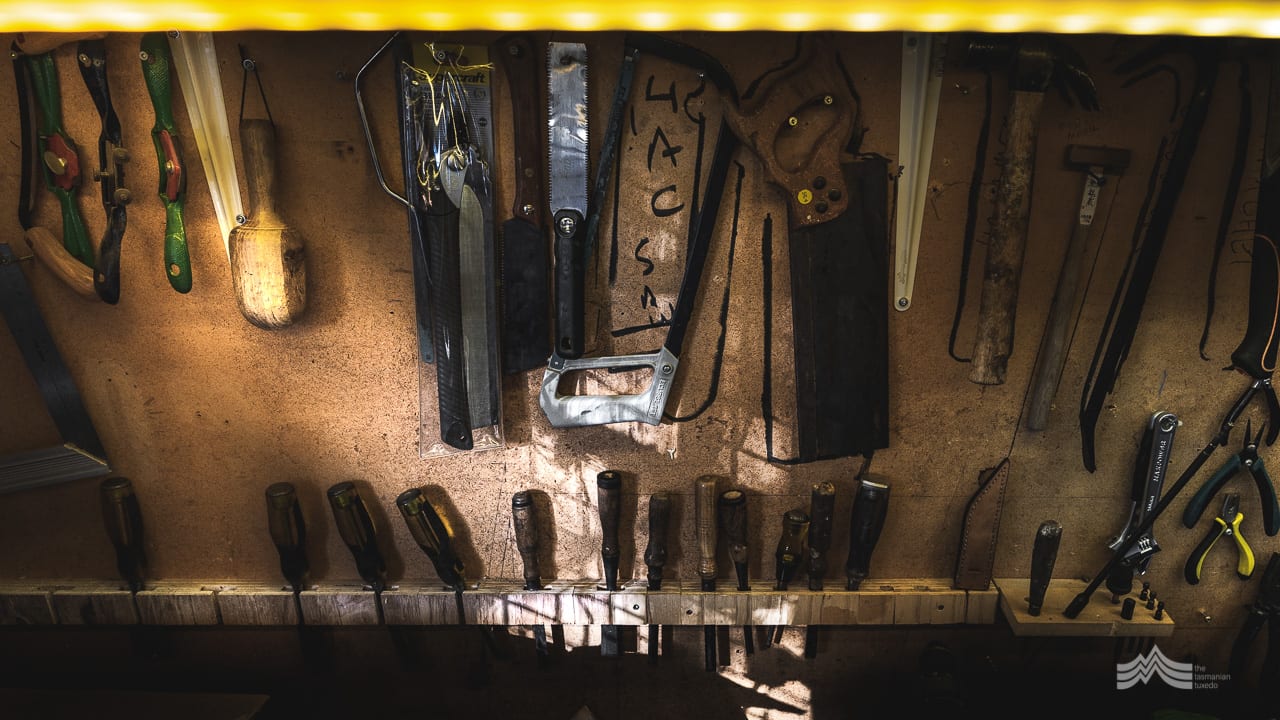
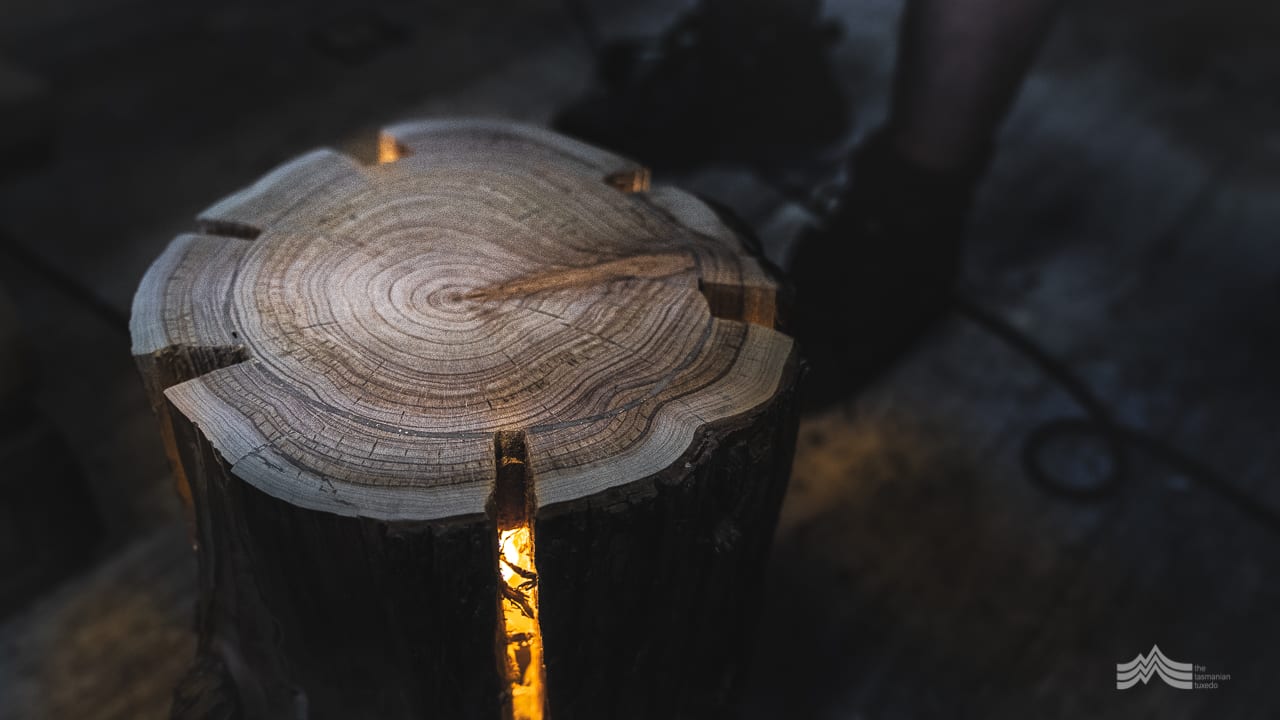
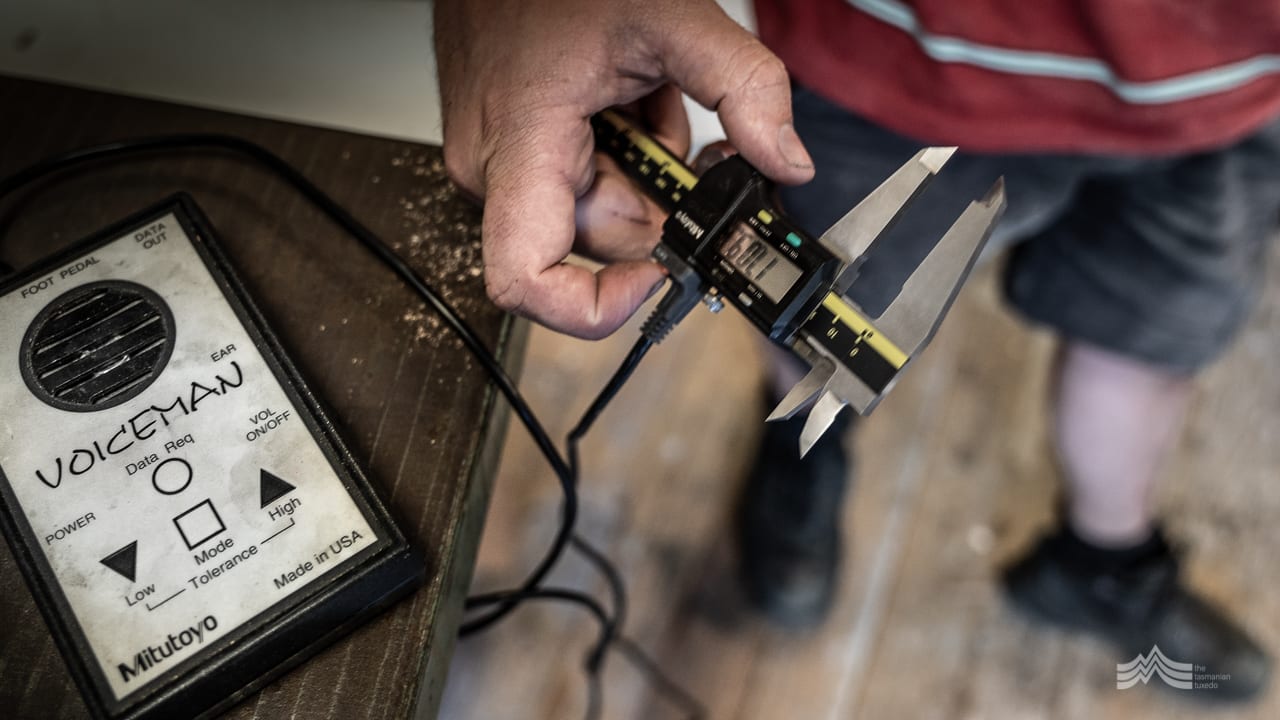
Pottering in his workshop, Duncan is surrounded by a variety of voices. “My reliance on sound has obviously increased and I have amassed quite a few talking tools over the years,” he explains. With a tape measure in hand he continues, “Talking tape measures and calipers have become really useful to me in order to get my precision measurements spot on. I’m also looking at acquiring a talking table saw and thickness planer soon. Hunting down customised tools for vision impaired craftspeople can be a little tricky and often involves a global search, but they certainly make my work considerably easier.”
Duncan finds much of his inspiration is drawn from the great outdoors. “I always find design ideas come most naturally when I’m outside doing something…cycling, walking, climbing,” he grins. “I’d say I design best when I’m not designing. Things just tend to come to me when I’m outdoors enjoying life.”
It’s a philosophy that resonates throughout his practice. Environmental sustainability has always been important to me,” says Duncan. “But by the same token, so too is business sustainability. I’m someone that will always put quality over quantity and that doesn’t cut corners. Often that means I find myself explaining to clients why my designs cost more than something mass produced they can source elsewhere… but I’m not about fads or cheap designs. These pieces are made here in Tasmania with quality materials and each piece often represents years of design refinement.”
“For me it’s not about the end result so much,” considers Duncan. “It’s the process of making and designing that I find the most rewarding. There are lots of frustrations and mistakes that lead to problem solving and it’s that process that really lies at the heart of it.”
Speaking about the industry in general, Duncan comments, “I do tend to find that we spit out graduates prone to ‘fast design’. It’s a bit like fast fashion. For me personally, I find greater value in sound design that will last the test of time as opposed to mass produced items that are cheaply made.” He adds, “I try to source as ethically as possible and my philosophy has always been to make things that last and that are timeless.”
Today, carefully filling custom orders from across the globe is interspersed with a warm sharing of skills through the vision impaired community. “Over the years I’ve been involved in a range of training and education initiatives to teach woodworking skills, but most recently I’ve been working with a program called Architecture Beyond Sight,” Duncan starts. “It’s a pilot program run through the Bartlett School of Architecture in London. Bartlett was selected as the world’s best architecture school in 2018 – a real credit to UCL (University College of London). They are looking to engage vision impaired people with design skills and I commend them for taking a lead in breaking down barriers. I’m really excited about it as I think it will set a new benchmark for architectural design and positively disrupt the visual, graphic and ‘abled’ culture of typical architectural education. A lot of people are keen to get involved and are keen to problem solve.”
“If I had to offer some advice to designers just starting out? I’d say don’t follow the trends – once they are gone, so too will your work be gone. Design from the heart and build pieces to last,” says Duncan.
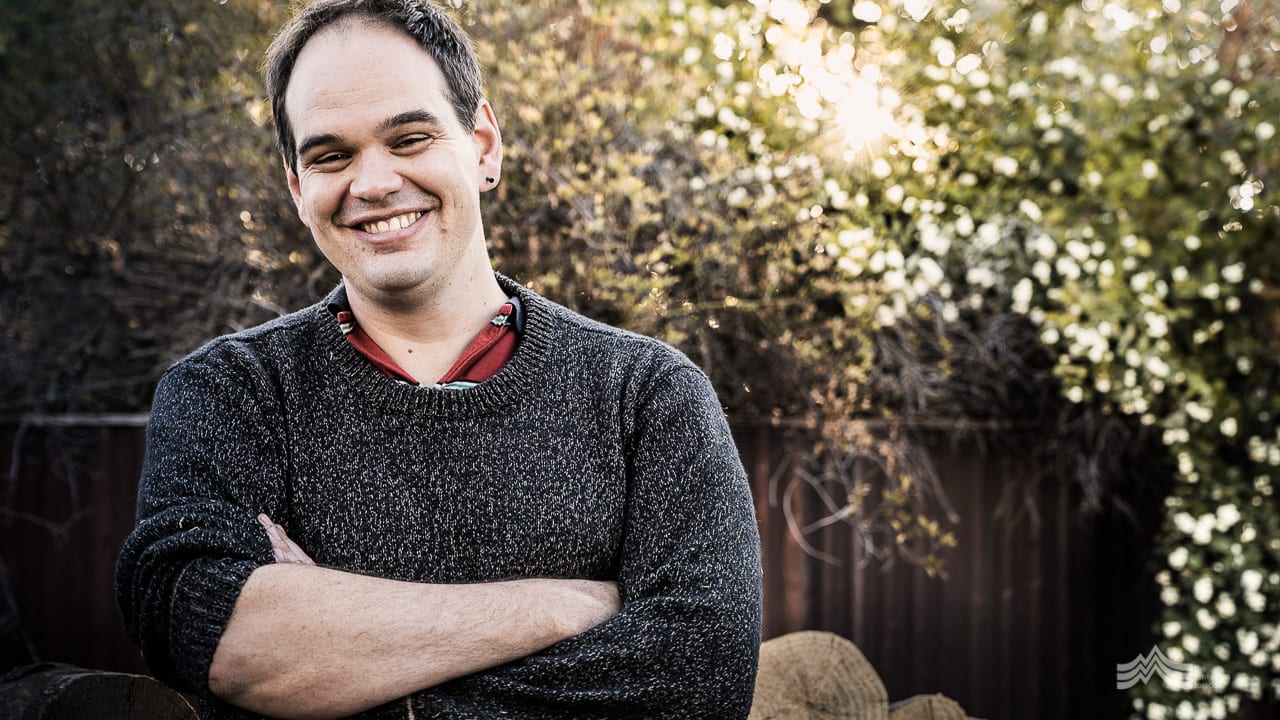
You can view Duncan’s work over on his website, and follow his ever-evolving journey on Facebook and Instagram.
